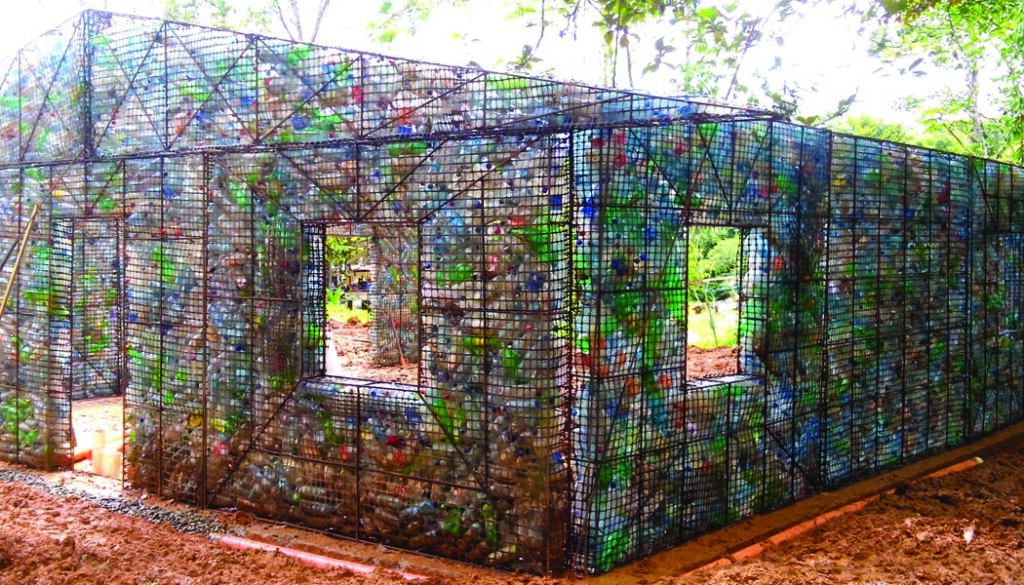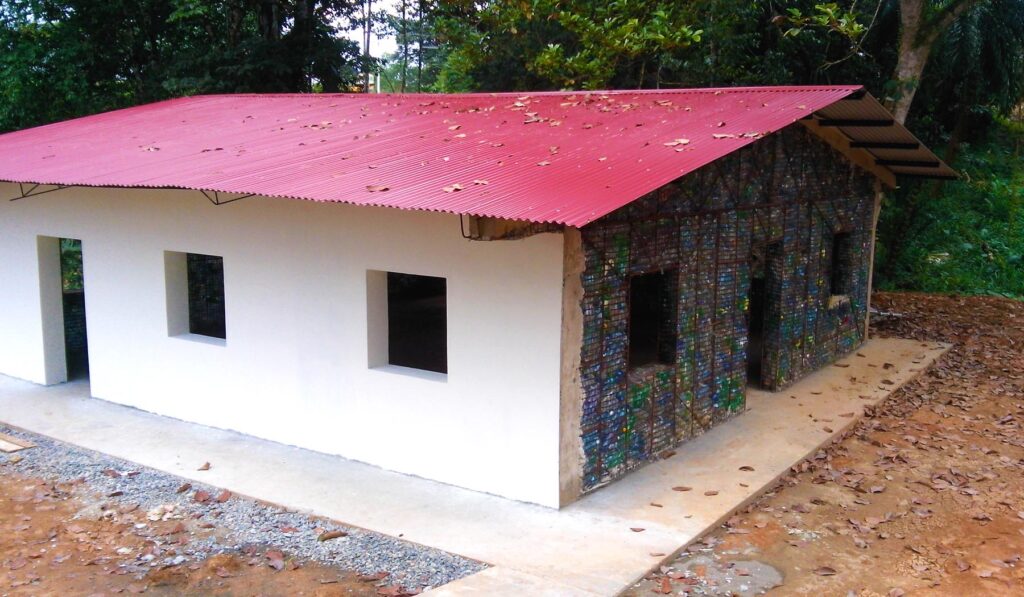The construction industry is a major contributor to environmental pollution and resource depletion. However, innovative approaches are emerging that utilize sustainable building materials to create more eco-friendly and affordable housing options. One such material gaining traction is recycled plastic waste, offering a potential solution to the global plastic pollution crisis.
What one person discards can become another's home. After collecting over a million plastic bottles, Robert Bezeau built an entire village out of this unconventional material. Watch Plastic Bottle Village. While plastic bottles can be a viable option for sustainable construction, other materials like hemp concrete offer additional benefits. Hempcrete concrete is a composite material made from hemp fibers and a lime-based binder. It is known for its excellent insulation properties, durability, and low environmental impact. By exploring a variety of sustainable materials, we can find innovative solutions to address housing needs and reduce waste.
Types of Recycled Plastic Waste
Several types of recycled plastic waste can be incorporated into construction projects:
- Plastic Bottles: A common example, plastic bottles filled with sand or gravel and stacked to form insulated walls.
- HDPE (High-Density Polyethylene): This type of plastic, often found in milk jugs and detergent bottles, can be melted and used for building blocks or even pipes.
- LDPE (Low-Density Polyethylene): Commonly used in grocery bags, LDPE shredded and incorporated into composite building materials.
- PET (Polyethylene Terephthalate): Found in plastic bottles, PET recycled into fibers used for insulation or reinforcement in building materials.
The use of plastic waste in construction offers several benefits:
- Reduced Waste: It diverts plastic from landfills and conserves natural resources.
- Cost Savings: Recycled plastic can be more affordable than traditional building materials.
- Improved Insulation: Certain types of plastic provide good insulation, reducing energy consumption.
However, some challenges exist:
- Durability: Long-term durability of structures built with plastic waste needs further evaluation.
- Building Codes: Regulations might not fully accommodate innovative uses of recycled plastic.
A Case Study: Panama's Plastic Waste Reduction Efforts
Panama City generates around 2,300 tons of garbage daily, with 30% consisting of plastic that ends up in waterways, on the coast, and in the sea. Recognizing the plastic pollution problem, the Panamanian government has taken steps to address it:
- Plastic Bag Ban: In 2019, Panama became the first Central American country to ban plastic bags, encouraging the use of reusable alternatives.
- Focus on Recycling: Initiatives launched to collect and recycle plastic waste, potentially including future use in construction.

While large-scale construction projects using recycled plastic may still be in development, these steps demonstrate Panama's commitment to tackling plastic pollution and creating a more sustainable future.

Other Sustainable Building Materials
Beyond plastic waste, various other recycled materials utilized in construction:
- Shipping Containers: Reused shipping containers transformed into modern and energy-efficient homes.
- Straw Bales: This natural and renewable material offers excellent insulation used to create walls.
- Tyres: Recycled tyres used as building blocks, providing insulation and structural support.
- Bamboo: A fast-growing, renewable resource used for flooring, walls, and roofing.
- Cork: A sustainable material derived from the cork oak tree, often used for flooring and insulation.
Building Techniques
- Stacking and Bonding: Materials like plastic bottles or shipping containers can be stacked and bonded using mortars or adhesives to create stable walls.
- Insulation: Recycled materials like straw bales can provide excellent insulation, reducing energy needs.
- Structural Support: Additional structural elements might be required for some recycled materials to ensure building safety.
- Finishing: Recycled materials may need a protective layer, such as plaster or stucco, for a polished appearance.
Environmental Benefits
- Reduced Waste: Using recycled materials diverts waste from landfills and conserves resources.
- Energy Savings: Improved insulation in structures built with recycled materials can lead to lower energy consumption.
- Carbon Sequestration: Some materials, like straw bales, can help sequester carbon dioxide.
- Reduced Pollution: Utilizing recycled materials minimizes pollution associated with extracting and processing new building materials.
Economic Benefits
- Cost Savings: Recycled materials are often cheaper than traditional building materials, making them a viable option for affordable housing.
- Job Creation: The use of recycled materials creates jobs in the construction industry and related sectors.
- Community Development: Sustainable building projects can contribute to community development and empower residents.
Challenges and Limitations
- Durability: Long-term durability of some recycled materials needs further investigation.
- Regulatory Hurdles: Building codes may need to be updated to fully embrace innovative uses of recycled materials.
- Availability: The availability of recycled materials can vary depending on location and demand.
Conclusion
Despite challenges, sustainable building materials offer significant potential for creating more affordable, eco-friendly, and resilient communities. By embracing these innovative approaches, we can help to address the pressing issues of housing affordability and environmental degradation.
As demonstrated by Panama's efforts to reduce plastic waste and explore its potential in construction, there is growing momentum towards sustainable building practices. By promoting the use of recycled materials and supporting innovative projects, we can create a more sustainable and equitable future for all.
The promotion of using plastic bottles in construction is a complex issue with both potential benefits and drawbacks.
Benefits:
- Reduced waste: Using plastic bottles in construction can divert waste from landfills.
- Cost savings: Recycled plastic bottles can be a more affordable building material than traditional options.
- Insulation: Plastic bottles can provide insulation, reducing energy consumption.
Drawbacks:
- Environmental impact: While reducing plastic waste in landfills is beneficial, the long-term environmental impact of using plastic in construction needs further research. There are concerns about the release of chemicals and the difficulty of recycling plastic structures.
- Durability: The long-term durability of structures built with plastic bottles may be a concern.
- Public perception: Some people may have negative perceptions about using plastic waste in construction due to its association with pollution.
Before promoting the use of plastic bottles in construction, it's important to carefully consider the potential benefits and drawbacks and weigh them against other sustainable building materials. It's also essential to support research and development to address any concerns related to durability and environmental impact.
Ultimately, the decision to promote the use of plastic bottles in construction should be based on a thorough evaluation of the available information and a commitment to finding sustainable and ethical solutions.
